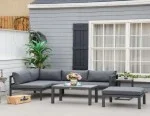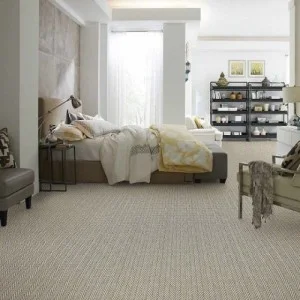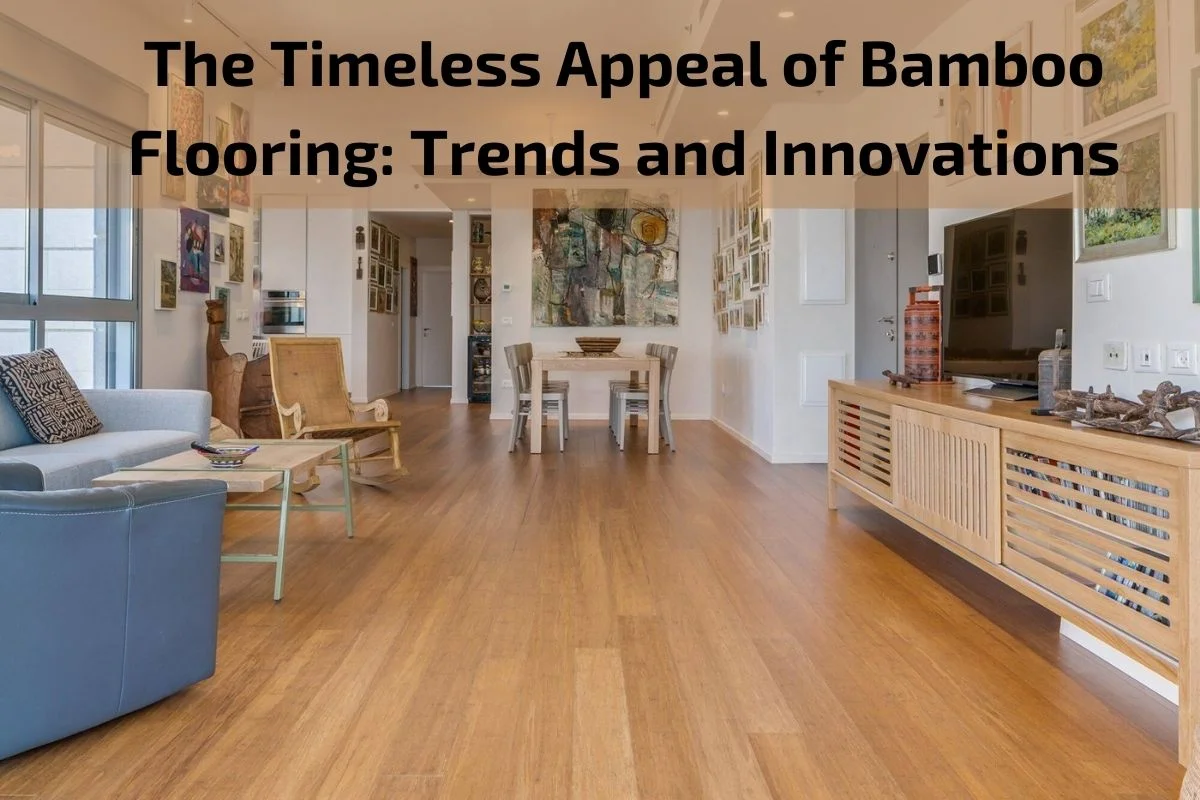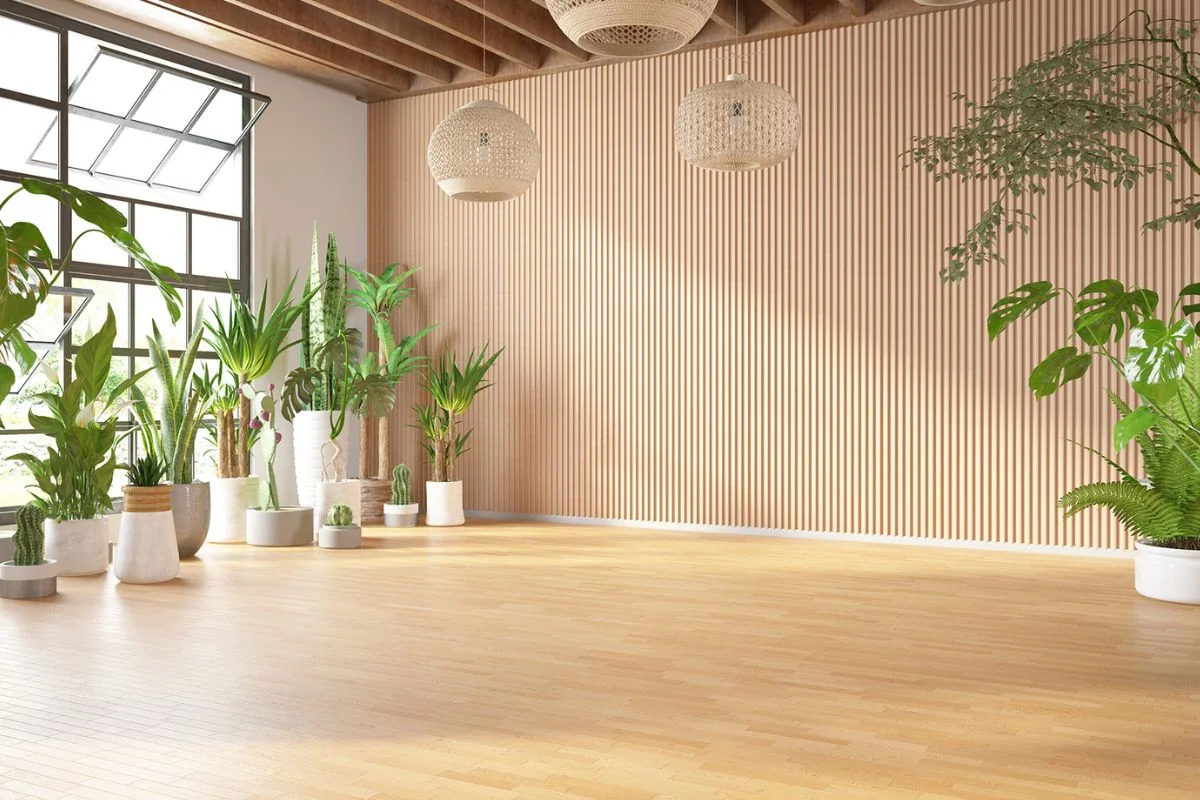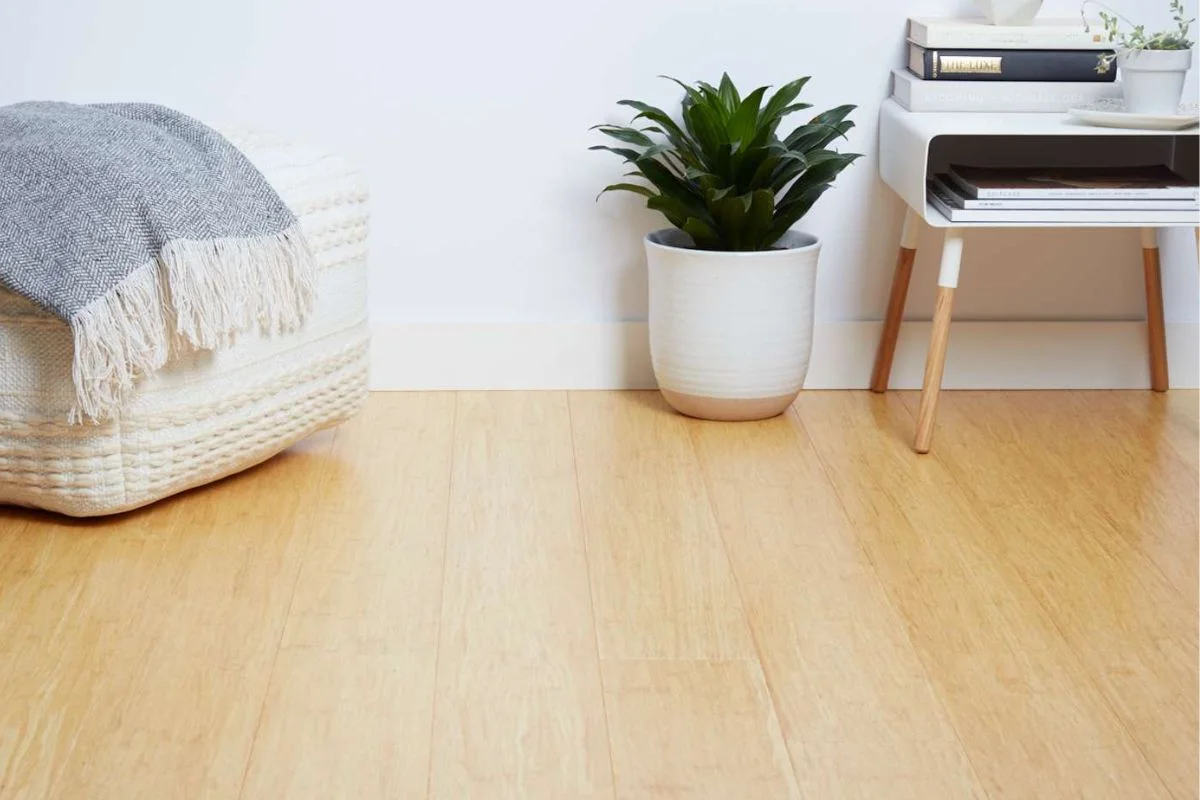Bamboo flooring has emerged as a popular choice among homeowners and designers alike, owing to its timeless appeal, eco-friendliness, and versatility. As sustainability becomes a key consideration in interior design, bamboo flooring stands out as a renewable and environmentally friendly alternative to traditional hardwood flooring options.
In recent years, bamboo flooring has undergone significant advancements and innovations, offering a wide range of styles, colors, and finishes to suit diverse tastes and design preferences. From classic natural bamboo tones to contemporary stained and engineered options, bamboo flooring has evolved to meet the evolving needs of modern living spaces.
In this exploration of the timeless appeal of bamboo flooring, we delve into the latest trends and innovations shaping the industry. From innovative manufacturing techniques to cutting-edge design trends, we uncover the factors driving the popularity of bamboo flooring in today’s homes and commercial spaces.
Brief Overview of Bamboo Flooring:
Bamboo flooring is a sustainable and eco-friendly alternative to traditional hardwood flooring options. It is derived from the fast-growing bamboo plant, which is a renewable resource known for its strength, durability, and versatility. Bamboo flooring offers a unique combination of beauty, durability, and sustainability, making it a popular choice for homeowners and designers alike.
The manufacturing process involves harvesting mature bamboo stalks, which are then sliced into strips and compressed under high pressure to form planks. These planks can be engineered in various styles, including solid bamboo, engineered bamboo, and strand-woven bamboo, each offering distinct characteristics and benefits.
One of the key advantages of bamboo flooring is its environmental sustainability. Bamboo is a rapidly renewable resource that can be harvested in as little as three to five years, compared to hardwood trees that can take decades to mature. Additionally, bamboo forests help mitigate carbon dioxide levels and promote biodiversity, making bamboo flooring a greener choice for environmentally conscious consumers.
Bamboo flooring is also prized for its durability and resilience. It is naturally resistant to moisture, pests, and mildew, making it suitable for a variety of environments, including kitchens, bathrooms, and basements. With proper care and maintenance, bamboo flooring can withstand the rigors of daily use and retain its beauty for years to come.
In terms of aesthetics, bamboo flooring offers a wide range of options to suit different design preferences and interior styles. From natural bamboo tones to stained and carbonized finishes, bamboo flooring can complement any décor scheme, adding warmth, elegance, and character to living spaces.
Importance of sustainable Bamboo Flooring choices in modern living
In today’s world, where environmental consciousness and sustainability are increasingly prioritized, the importance of making sustainable choices extends to every aspect of modern living, including flooring options like bamboo flooring. Here’s why sustainable bamboo flooring choices are crucial in modern living:
Environmental Impact: Sustainable bamboo flooring is made from a rapidly renewable resource – bamboo, which is known for its fast growth and minimal environmental impact. Choosing bamboo flooring helps reduce reliance on finite hardwood resources and promotes the preservation of forests and ecosystems.
Carbon Footprint Reduction: Bamboo forests have a significant capacity to absorb carbon dioxide from the atmosphere, making bamboo flooring a carbon-neutral or even carbon-negative flooring option. By choosing bamboo flooring, homeowners can contribute to mitigating climate change and reducing their carbon footprint.
Preservation of Biodiversity: Bamboo forests support diverse ecosystems and provide habitat for a variety of plant and animal species. By opting for sustainable bamboo flooring, individuals help protect these ecosystems from deforestation and habitat loss, preserving biodiversity and ecological balance.
Renewable Resource Management: Bamboo is one of the fastest-growing plants on Earth, with some species growing up to three feet in a single day. Sustainable bamboo forestry practices involve responsible harvesting and replanting of bamboo stalks, ensuring the long-term viability of bamboo as a renewable resource.
Health and Indoor Air Quality: Sustainable bamboo flooring is typically manufactured using non-toxic adhesives and finishes, reducing the emission of volatile organic compounds (VOCs) that can compromise indoor air quality and pose health risks. Choosing bamboo flooring promotes healthier indoor environments for occupants.
Longevity and Durability: Bamboo flooring is renowned for its durability and longevity, offering a long-lasting flooring solution that reduces the need for frequent replacement and disposal of flooring materials. Sustainable bamboo flooring options are designed to withstand the rigors of daily use while maintaining their beauty and integrity over time.
Ethical Considerations: Sustainable bamboo flooring is often produced using fair labor practices and ethical sourcing methods, ensuring that workers are treated fairly and compensated equitably for their labor. Choosing bamboo flooring that adheres to ethical standards supports social responsibility and human rights in the supply chain.
Benefits of Bamboo Flooring
Bamboo flooring offers a multitude of advantages that make it a preferred choice for homeowners and designers seeking sustainable, durable, and stylish flooring options. Here are some key benefits of bamboo flooring:
Sustainability: Bamboo is a rapidly renewable resource that regenerates much faster than traditional hardwood trees. Bamboo plants reach maturity in as little as three to five years, making bamboo flooring an environmentally friendly choice compared to hardwoods, which can take decades to mature.
Durability: Despite its lightweight appearance, bamboo flooring is remarkably durable and resilient. It is harder than many hardwoods and can withstand heavy foot traffic, making it suitable for high-traffic areas in both residential and commercial settings.
Versatility: Bamboo flooring comes in a variety of styles, colors, and finishes to suit different design preferences and interior styles. From natural bamboo tones to stained and carbonized finishes, bamboo flooring offers versatility and flexibility in design options.
Aesthetic Appeal: Bamboo flooring exudes natural beauty and elegance, adding warmth and character to any space. Its distinctive grain patterns and rich textures create a sense of visual interest and sophistication, enhancing the overall ambiance of interior environments.
Easy Maintenance: Bamboo flooring is relatively easy to clean and maintain, requiring regular sweeping or vacuuming to remove dust and debris. Occasional mopping with a damp cloth or hardwood floor cleaner helps keep bamboo flooring looking its best.
Moisture Resistance: Bamboo flooring exhibits natural resistance to moisture, making it suitable for installation in areas prone to humidity and moisture, such as kitchens, bathrooms, and basements. Proper sealing and installation techniques help further enhance its moisture resistance properties.
Hypoallergenic Properties: Bamboo flooring is hypoallergenic and resistant to mold, mildew, and pests, making it an ideal choice for individuals with allergies or respiratory sensitivities. Its smooth surface inhibits the accumulation of dust and allergens, promoting healthier indoor air quality.
Cost-Effectiveness: Bamboo flooring offers excellent value for money, providing a durable and long-lasting flooring solution at a relatively affordable price point compared to traditional hardwoods. Its longevity and low maintenance requirements make it a cost-effective investment for homeowners.
Contribution to Green Building: Bamboo flooring contributes to green building and sustainability initiatives by reducing reliance on finite hardwood resources and promoting environmentally responsible manufacturing practices. Choosing bamboo flooring supports sustainable forestry and conservation efforts.
Types of Bamboo Flooring
Bamboo flooring comes in various types, each offering unique characteristics, benefits, and installation methods. Understanding the different types of bamboo flooring can help homeowners and designers make informed decisions based on their specific needs and preferences. Here are the main types of bamboo flooring:
Solid Bamboo Flooring:
- Solid bamboo flooring is made from solid bamboo stalks that are milled into planks.
- It features a uniform structure and appearance, with bamboo strips arranged vertically or horizontally.
- Solid bamboo flooring offers excellent durability and stability, making it suitable for high-traffic areas.
- Installation methods include nail-down or glue-down techniques.
Engineered Bamboo Flooring:
- Engineered bamboo flooring consists of multiple layers of bamboo veneer glued together with a plywood or fiberboard core.
- It is more dimensionally stable than solid bamboo flooring, making it less prone to expansion and contraction due to changes in humidity and temperature.
- Engineered bamboo flooring is available in a variety of styles, including click-lock and tongue-and-groove installations.
- It can be installed as a floating floor or glued down depending on the manufacturer’s recommendations.
Strand-Woven Bamboo Flooring:
- Strand-woven bamboo flooring is the most durable and resilient type of bamboo flooring available.
- It is made by compressing shredded bamboo fibers under high pressure and heat, resulting in a dense and hardwearing material.
- Strand-woven bamboo flooring exhibits superior strength and resistance to dents, scratches, and moisture.
- It comes in a wide range of colors and finishes, including natural, carbonized, and stained options.
- Installation methods for strand-woven bamboo flooring include glue-down, nail-down, or floating installations.
Carbonized Bamboo Flooring:
- Carbonized bamboo flooring undergoes a heat treatment process that darkens the natural color of the bamboo.
- This process results in a richer, deeper hue, ranging from light caramel tones to darker shades of brown.
- Carbonized bamboo flooring offers a warm and inviting aesthetic, adding character and charm to interior spaces.
- It is available in both solid and engineered formats, offering versatility in design options.
Natural Bamboo Flooring:
- Natural bamboo flooring retains the original color and grain pattern of the bamboo plant.
- It offers a light, airy aesthetic that complements a wide range of interior styles, from contemporary to traditional.
- Natural bamboo flooring is available in various plank sizes and finishes, allowing for customization and flexibility in design.
- It is a popular choice for homeowners seeking a clean and minimalist look with natural beauty and simplicity.
Maintenance and Care for Bamboo Flooring
Proper maintenance and care are essential to preserve the beauty, durability, and longevity of bamboo flooring. By following these guidelines, homeowners can ensure that their bamboo flooring remains in pristine condition for years to come:
Regular Cleaning:
Sweep or vacuum the bamboo flooring regularly to remove dust, dirt, and debris. Use a soft-bristle broom or a vacuum cleaner with a hardwood floor attachment to prevent scratches.
Damp Mopping:
Occasionally damp mop the bamboo flooring using a well-wrung mop and a pH-neutral hardwood floor cleaner. Avoid using excess water, as moisture can damage the bamboo and cause warping or swelling. Dry the floor immediately with a clean, dry cloth or mop.
Avoid Harsh Cleaners:
Avoid using harsh cleaners, abrasive scrubbers, or wax-based polishes on bamboo flooring, as they can strip away the finish and damage the surface. Stick to mild, non-abrasive cleaning products specifically designed for bamboo floors.
Wipe Spills Immediately:
Promptly wipe up any spills or liquid accidents to prevent moisture from seeping into the bamboo and causing stains or damage. Use a clean, dry cloth to blot the spill and absorb as much liquid as possible.
Protect Against Scratches:
Place felt pads or furniture glides under heavy furniture legs to prevent scratches and indentations on the bamboo flooring. Avoid dragging or sliding furniture across the floor, as this can cause damage to the surface.
Use Area Rugs and Mats:
Place area rugs or mats in high-traffic areas, entryways, and kitchen areas to protect the bamboo flooring from wear and tear. Make sure the rugs have a non-slip backing to prevent accidents and ensure proper ventilation to prevent moisture buildup underneath.
Control Indoor Climate:
Maintain stable indoor humidity levels and temperature to prevent the bamboo from expanding, contracting, or warping. Use a humidifier during dry winter months and a dehumidifier during humid summer months to keep moisture levels in check.
Schedule Professional Maintenance:
Periodically schedule professional maintenance and refinishing for bamboo flooring to keep it looking its best. Professional refinishing can remove surface scratches, restore the finish, and rejuvenate the appearance of the bamboo.
Conclusion
In conclusion, bamboo flooring stands as a sustainable, durable, and aesthetically pleasing flooring option that offers numerous benefits for homeowners and designers alike. Its eco-friendly properties, durability, versatility, and ease of maintenance make it a preferred choice for those seeking stylish and sustainable flooring solutions.


